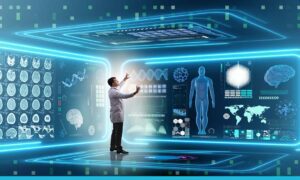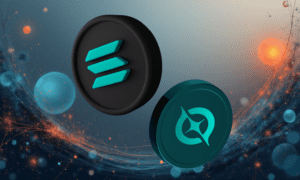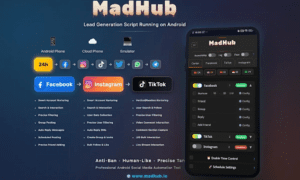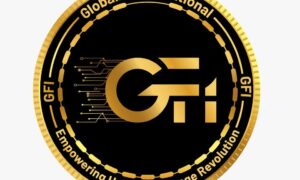Tips to Stay Ahead in HealthTech with AI Medical Documentation Trends
As technology continues to advance, AI is transforming how healthcare professionals manage patient records, making the process faster, more accurate, and more efficient. Staying ahead of the curve in HealthTech means understanding these trends and leveraging AI medical documentation to improve your operations.
In this blog, we’ll explore key tips and strategies to help you stay on top of AI medical documentation trends so you can enhance your workflow, improve patient care, and keep your business competitive in this fast-moving field.
The AI Revolution in Medical Documentation
Remember the days of scribbling notes during patient visits, only to spend evenings transcribing them into electronic records? Those days are numbered. The healthcare industry is witnessing unprecedented growth in ai medical documentation solutions designed to alleviate administrative burdens while improving accuracy.
AI in medical documentation is helping healthcare professionals reduce administrative tasks, giving them more time to focus on patient care. This shift isn’t just about efficiency, it’s about restoring the human element in medicine, allowing providers to connect more deeply with patients and enhance the quality of care.
Currently, healthcare providers face numerous challenges with traditional documentation methods, including time constraints, inaccuracies, and documentation fatigue. Meanwhile, these innovative tools are transforming healthcare efficiency by automating routine tasks and extracting meaningful insights from clinical conversations.
The Evolution of AI Medical Documentation in 2025
The journey from paper charts to sophisticated AI systems has been remarkable, with each stage bringing us closer to truly intelligent documentation. Let’s examine how we got here and where we’re headed.
From Manual Notes to Intelligent Documentation Systems
Medical documentation has evolved dramatically from handwritten notes to basic dictation to today’s sophisticated AI systems that understand context, medical terminology, and even patient history. The best ai note taking app options now integrate smoothly with existing workflows, making adoption easier than ever before.
This evolution hasn’t been just technological, it represents a fundamental shift in how we approach the documentation process itself, moving from documentation as a burden to documentation as a clinical assistant.
Major Breakthroughs in AI Note Taking Technology
Recent advancements in natural language processing have been game-changers. Today’s ai note taker free note-taking apps can distinguish between small talk and clinically relevant information, accurately capture medical terminology, and even structure notes according to standard medical formats.
Machine learning algorithms continue to improve with each interaction, learning from corrections and adapting to individual clinician preferences. This personalization aspect means that documentation becomes more accurate and useful over time.
How Ambient Listening is Reshaping Clinical Documentation
Perhaps the most exciting development is ambient listening technology, where ai notes are generated automatically from natural conversations between providers and patients. Clinicians no longer need to dictate or type, they simply practice medicine while the AI works in the background.
Cleveland Clinic is leading the way with ambient listening technology, reducing time spent on documentation and allowing doctors to focus more on direct patient care. This innovation enhances both efficiency and the quality of care.
Top AI Medical Documentation Solutions Transforming Healthcare
With numerous options flooding the market, identifying the right solution for your practice requires careful consideration. Let’s break down what’s available and how to evaluate them.
Comprehensive Analysis of Leading Scribe Tools for Healthcare Providers
The scribe tool market has exploded with options ranging from basic transcription services to sophisticated AI assistants capable of drafting complete clinical notes. When evaluating these tools, consider factors including HIPAA compliance, EHR integration capabilities, and specialty-specific features.
The most advanced solutions offer more than just transcription; they provide clinical decision support, identify potential gaps in documentation, and even suggest appropriate billing codes based on the documented encounter.
Comparing the Best AI Note Taking Apps for Clinical Settings
Not all ai note taking solutions are created equal. Some excel at capturing structured data, while others might be better at narrative documentation. Consider your specialty’s unique documentation requirements before selecting a solution.
Orthopedists might prioritize anatomical accuracy and procedure documentation, while psychiatrists may need solutions that excel at capturing nuanced conversations. Understanding these differences is crucial for successful implementation.
Free vs Premium AI Note Taker Options: What Healthcare Providers Need to Know
While ai note taker free options for note-taking can provide basic functionality, premium solutions typically offer deeper EHR integration, better accuracy with specialty-specific terminology, and more robust security features.
That said, many vendors now offer tiered pricing models that allow practices to start with basic functionality and scale up as needed. This approach can be particularly valuable for smaller practices with limited technology budgets.
Implementing AI Documentation for Enhanced Clinical Workflows
Having the right technology is only half the battle, successful implementation requires thoughtful integration with existing clinical processes. Let’s examine how to maximize the impact of these tools.
Integration Strategies with Existing EHR Systems
The value of any ai notes solution depends largely on how well it integrates with your existing EHR system. The best implementations create seamless workflows where documentation happens in the background without disrupting patient care.
| Integration Approach | Benefits | Challenges | Best For |
| API-Based | Direct data transfer, real-time updates | May require developer support | Larger organizations with IT resources |
| Middleware Solutions | Works with multiple EHR systems | An additional software layer to maintain | Multi-specialty groups with diverse systems |
| Native EHR Features | Seamless integration | Limited customization | Practices satisfied with EHR-provided tools |
| Manual Import/Export | Universal compatibility | Requires additional steps | Small practices with limited technology |
Working closely with both your EHR vendor and ai note taking solution provider is essential for creating workflows that enhance rather than complicate clinical care.
Maximizing ROI on AI Notes Implementation
To achieve positive ROI, focus not just on time savings but also on quality improvements, reduced burnout, and potential revenue enhancements through more accurate coding.
Mount Sinai Health System integrated AI into their electronic health record system and observed a significant decrease in data entry errors, improving record accuracy while increasing clinician efficiency.
Training Healthcare Staff for Optimal AI Documentation Adoption
Even the best ai note taking app requires proper training for maximum benefit. Create a structured onboarding process that includes hands-on practice sessions, regular check-ins, and a feedback mechanism for continuous improvement.
Remember that different generations of providers may approach technology adoption differently. Tailor training approaches to accommodate various learning styles and comfort levels with technology.
Overcoming Data Security and HIPAA Compliance Challenges
As with any healthcare technology, security and compliance must remain top priorities when implementing ai note taking solution.
Privacy Concerns in AI-Powered Documentation
Patients are increasingly aware of and concerned about how their health information is used. Be transparent about your use of AI documentation tools, including what data is captured and how it’s protected.
The global market for AI in healthcare is projected to expand from $10.4 billion in 2021 to $67.4 billion by 2027, demonstrating a compound annual growth rate of 44.9% (Mordor Intelligence). This growth will only intensify scrutiny around data security and patient privacy.
Building HIPAA-Compliant AI Documentation Systems
Ensure any scribe tool you adopt offers end-to-end encryption, access controls, and audit trails. Vendor contracts should address data ownership, processing limitations, and breach notification procedures.
Regular security assessments become even more crucial when implementing AI tools that may access and process protected health information in novel ways.
Ethical Considerations for AI in Patient Documentation
Beyond legal compliance, consider the ethical implications of your documentation practices. How might AI systems impact the provider-patient relationship? Could algorithmic biases affect how different patient populations are documented?
Creating ethical guidelines for AI use in your practice demonstrates a commitment to responsible innovation while protecting your patients and your organization.
Moving Toward AI-Augmented Healthcare
The journey toward AI-enhanced documentation isn’t just about efficiency, it’s about fundamentally transforming how clinicians interact with information and ultimately care for patients. By carefully selecting the right ai notes tools for your practice and implementing them thoughtfully, you can position yourself at the forefront of this healthcare revolution.
As these technologies continue to evolve, those who embrace them early will gain valuable experience and competitive advantages. The key is approaching implementation as a clinical transformation initiative rather than merely a technology project.
Embracing the Future of Medical Documentation
Healthcare has always been about connection, the human relationships between providers and patients. As ai medical documentation tools become more sophisticated, they don’t replace this connection but rather enhance it by freeing clinicians from administrative burdens.
Whether you’re exploring your first scribe tool implementation or looking to upgrade existing systems, the key to success lies in focusing on clinical outcomes rather than just technological capabilities. By keeping patient care at the center of your documentation strategy, you’ll ensure that technology serves medicine, not the other way around.
FAQs on AI Medical Documentation
-
How accurate are today’s AI medical documentation tools?
Most leading solutions achieve 95-98% accuracy for general medical terminology, with specialty-specific accuracy continuing to improve through machine learning and custom training.
-
How do patients perceive AI-assisted documentation during clinical encounters?
Surveys indicate 85% of patients are comfortable with AI documentation tools when properly introduced by their provider, with many appreciating the increased face-to-face interaction it enables.
-
What training is required for clinical staff to effectively use AI note takers?
Most providers become proficient with 2-4 hours of initial training and 2-3 weeks of supported use, though regular updates and ongoing optimization typically deliver the best results.































